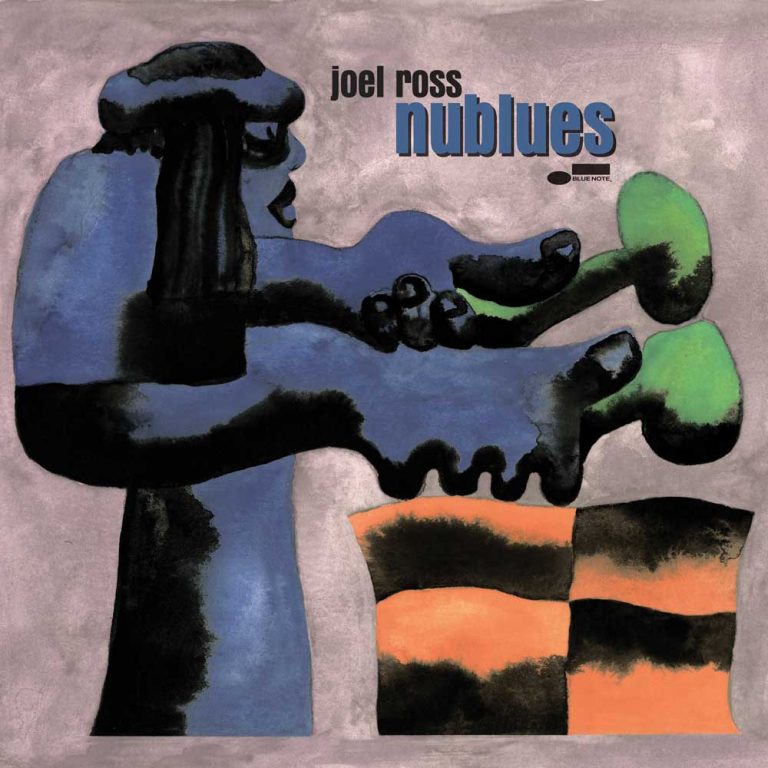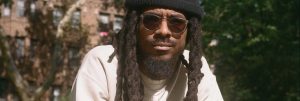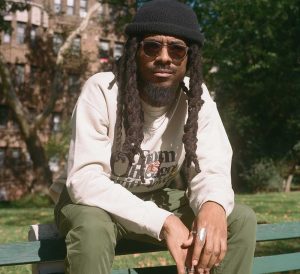“Learn the melody, learn the songs. Learn all the information. That’s our ethos at this point. Learn the music so well that you can then do whatever you want with it,” Ross says, as he recuperates during the downtime of a packed touring schedule with the Blue Note Allstars.
Ross’ fourth album for Blue Note sees the vibraphonist team up with a current day configuration of his Good Vibes group, featuring Immanuel Wilkins on alto saxophone, Jeremy Dutton on drums, Jeremy Corren on piano, Kanoa Mendenhall on bass, and special guest Gabrielle Garo on flute.
“For this album we really focused on following the melody,” explains Ross. “Trusting each other and trusting the melody enough to try new things and go to new places. The structures then rebuild themselves.”
At this point the group are so in tune they’re almost telepathic. But that level of connection received an extra boost during the Covid restrictions. Robbed of the chance of long rehearsals together, Ross prepared music that “focused on the band just being able to come together and connect as deeply and quickly as possible.”

JOEL ROSS nublues
Available to purchase from our US store.The music itself however had been brewing for a while with Ross preferring to let ideas develop over time. Conversations with his partner Garo left Ross posing himself questions about the nature of artistry, and what it means to perform. Talking with his good friend Wilkins found the pair asking themselves just what had happened to swing and groove in modern jazz. One of his degree classes on improvisation with saxophonist Darius Jones prompted Ross to consider his preconceptions of the blues, and think about what his version of the blues could sound like.
All these ideas helped Ross as he composed the music for “nublues”, acting as signposts on his wider quest for true improvisation.
“If we know the melodies well enough, we can play a melody from a completely different song and not get caught off guard – we can just navigate to this next space together.” In Ross’ world, the musical structures are fluid and the band is truly democratic, because anybody can insert a melody anywhere, even rhythmically.
“I feel like this process has helped us grow in our improvisational abilities and awareness and processes. Now we really feel free to deconstruct the regular notions of music making and form and truly get into improvising – improvising entire shows, and eventually improvising the record and the recording process.”

Amidst all this improvisational blur, Ross’ church upbringing helps him keep a certain musical perspective. Church music is the thread that he traces through the blues and as far back as Bach, picking up melodic fragments that can be reharmonized along the way. Similarly, a blues feeling from 150 years ago can also be transplanted to the here and now.
“The blues is our expression of our dealing with life,” says Ross, and that’s a feeling that can be manifested in the concert hall as well as the nave.
In the end, the music has to serve a higher purpose. It should provide an atmosphere and a space to reflect life, and that’s where Ross has always come from. Good Vibes music is Ross’ way of processing the ups and downs of life. The group dynamic is focused around openness, listening, trust, and helping each other be the best they can be.
“The more we can show love, encouragement and patience, any of these things to anyone else, then the better off in the world we’ll all be.”
In this way, the music that Ross and Good Vibes conjure up on “nublues” is a meditative antidote to our rushed, attention-hungry times.
Read on… Charles Lloyd – Sacred Thread
Max Cole is a writer and music enthusiast based in Düsseldorf, who has written for record labels and magazines such as Straight No Chaser, Kindred Spirits, Rush Hour, South of North, International Feel and the Red Bull Music Academy.
Header image: Joel Ross. Photo: Bruce Bennett via B Natural.


